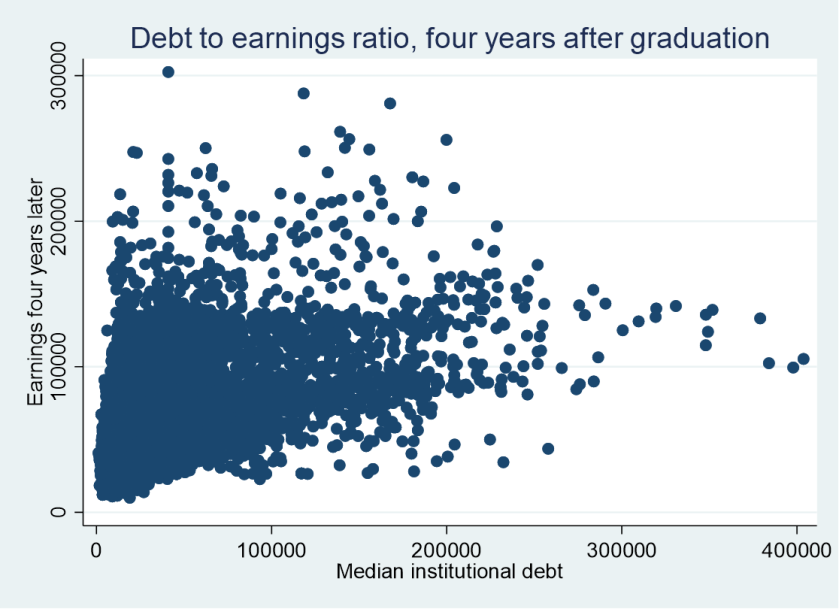I was just starting to wonder when the U.S. Department of Education would release a new year of College Scorecard data, so I wandered over to the website to check for anything new. I was pleasantly surprised to see a date stamp of April 25 (today!), which meant that it was time for me to give my computer a workout.
There are a lot of great new data elements in the updated Scorecard. Some features include a fourth year of post-graduation earnings, information on the share of students who stayed in state after college, earnings by Pell receipt and gender, and an indicator for whether no, some, or all programs in a field of study can be completed via distance education. There are plenty of things to keep me busy for a while, to say the least. (More on some of the ways I will use the data coming soon!)
In this update, I share data on trends in debt to earnings ratios by field of study. I used median student debt accumulated by the first Scorecard cohorts (2014-15 and 2015-16 leavers) and tracked median earnings one, two, three, and four years after graduating college. The downloadable dataset includes 34,466 programs with data for each element.
The below table shows debt-to-earnings ratios for the four most common credential levels. The good news is that the average ratio ticked downward for each credential level, with bachelor’s and master’s degrees showing steep declines in their ratios than undergraduate certificates and associate degrees.
| Credential | 1 year | 2 years | 3 years | 4 years |
| Certificate | 0.455 | 0.430 | 0.421 | 0.356 |
| Associate | 0.528 | 0.503 | 0.473 | 0.407 |
| Bachelor’s | 0.703 | 0.659 | 0.569 | 0.485 |
| Master’s | 0.833 | 0.793 | 0.734 | 0.650 |
The scatterplot shows debt versus earnings four years later across all credential levels. There is a positive correlation (correlation coefficient of 0.454), but still quite a bit of noise present.

Enjoy the new data!
